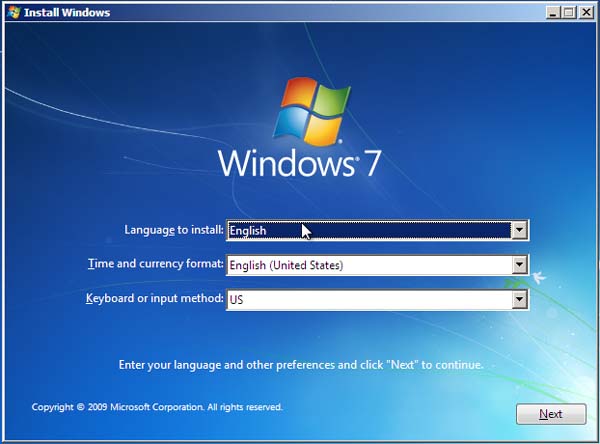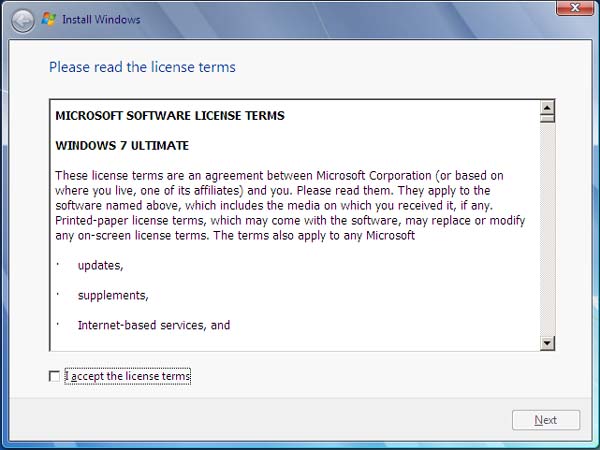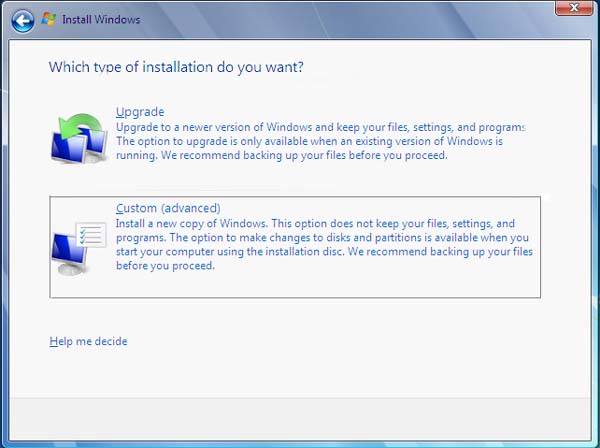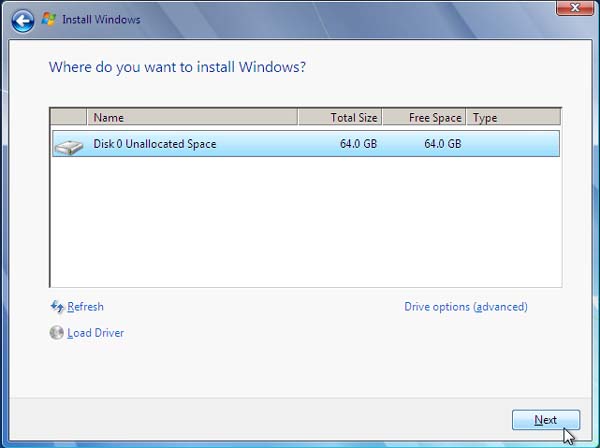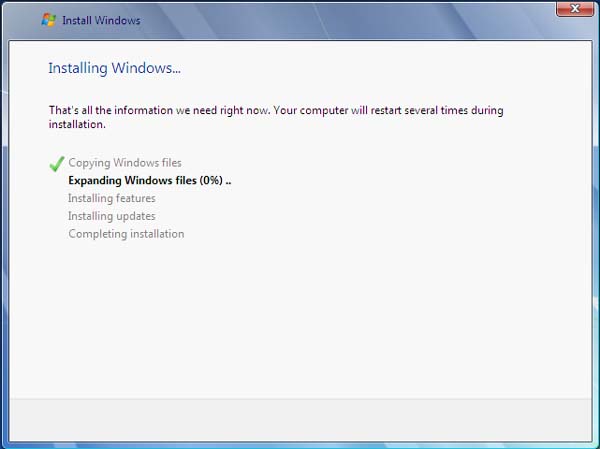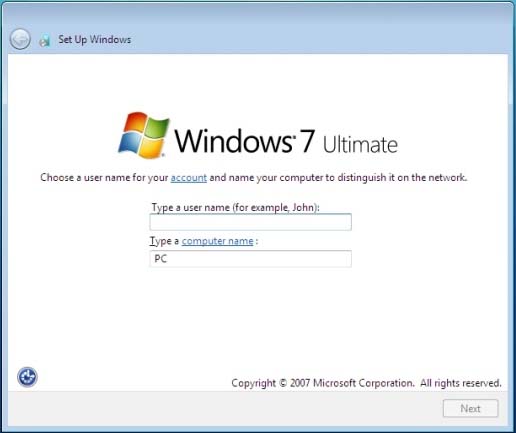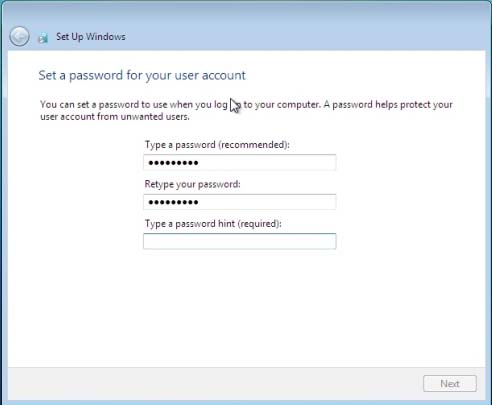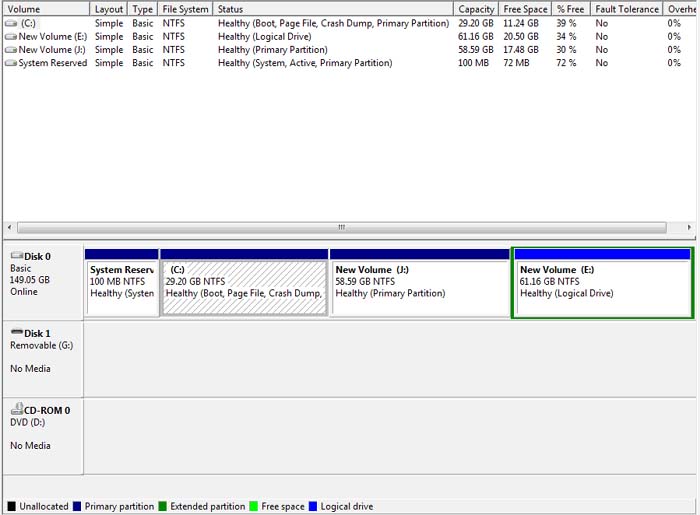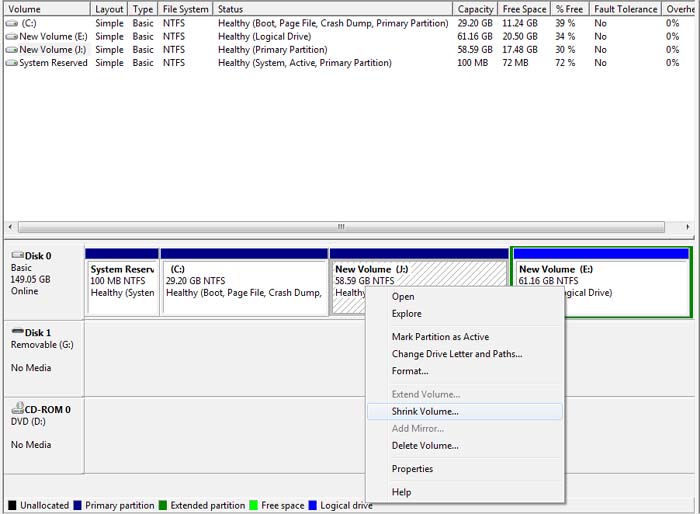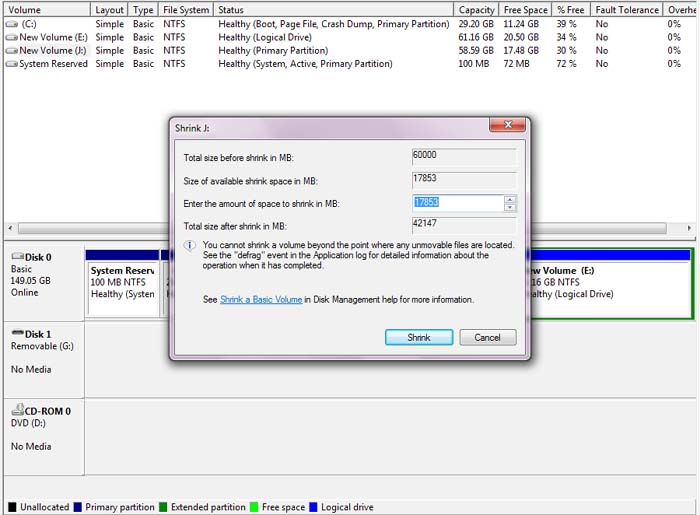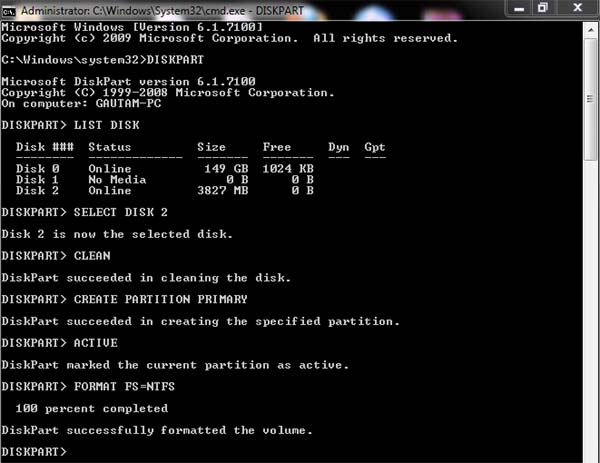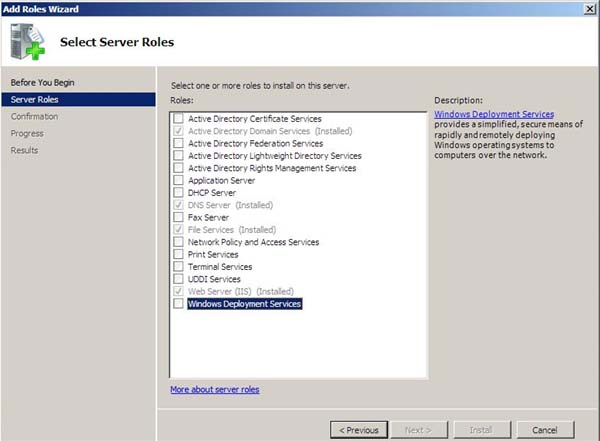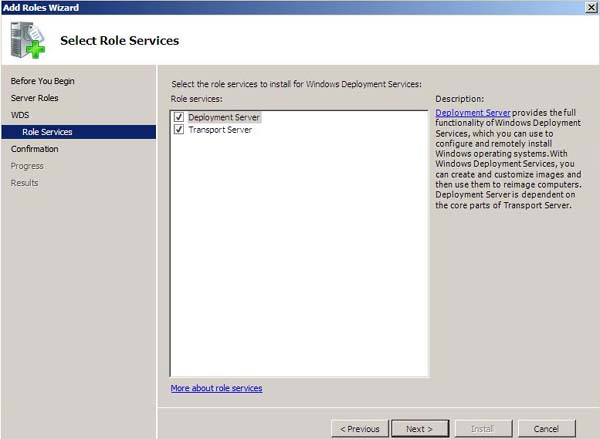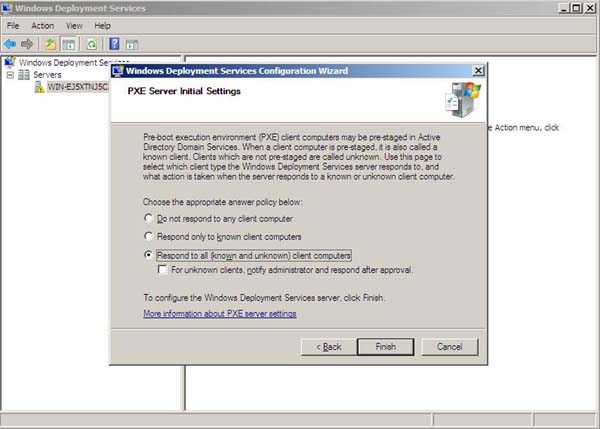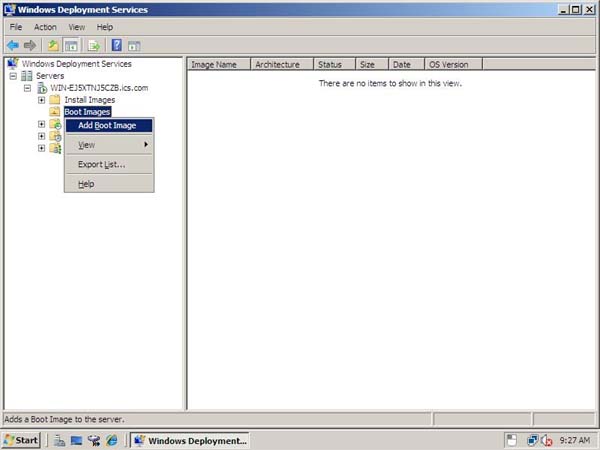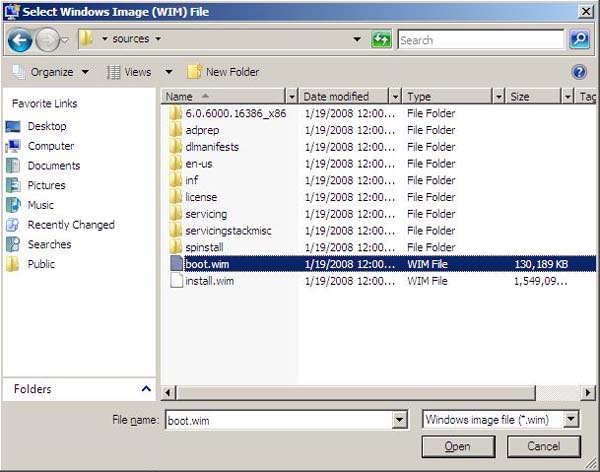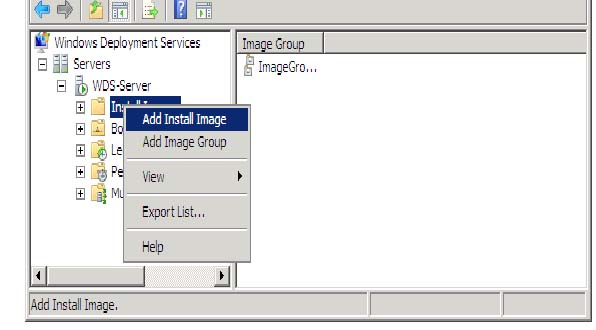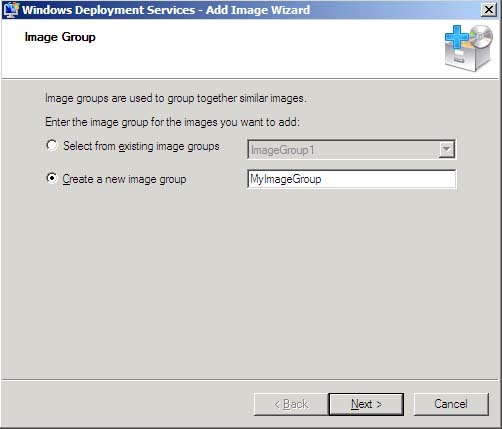How to Install Windows Server 2003 (Standard or Enterprise Edition) on a new Server
Introduction
I am talking about deploying and installing Microsoft Windows Server 2003 (Standard or Enterprise) on a new Server. This step by step document contains screen shots of the installation process of Windows Operating System which will takes you through the complete process of the installation. The installation steps of the Standard and Enterprise Editions are the same no difference in the installation process of the two versions of Windows Server 2003, the difference is in the features only.
Hardware Requirements for Windows Server 2003
As minimum requirements for Windows Server 2003, An Intel processor-based server running Windows Server 2003 with at least 128 megabytes (MB) of RAM can be used to run Windows Server 2003, but as your organization goes bigger and your users are increased, then you should consider bringing a powerful server with latest Processor Technology (Dual Core) and high processor cache (2MB or 4MB), also with at least 512 MB Memory. Microsoft also recommends that the server should have several gigabytes of disk storage (at Least Two SCSI Disks). In addition, servers should be equipped with high-speed network interface cards (Minimum 100 MBps).
Server Disks and Partitions
The partition in which you are going to deploy the Windows 2003 Operating System should be formatted as NTFS not FAT. By default the main partition (C Drive) will host the Windows Operating System and Files, but if you plan to host this folder and files on another Partition/Disk, then you have to make sure that this drive is formatted as NTFS as well.
Install MS Windows Server 2003 on your Server
Install MS Windows Server 2003 on your Server
If your server was purchased from a known vender, as I mentioned above, like HP, DELL, IBM, etc) then this server will come with a complete kit to prepare your server for Microsoft Various Operating Systems installation, and other operating systems like Linux, Unix, MAC, etc. You have to use this kit to prepare your server with all the configuration and drivers for the operating system that you chose. Here I will not discuss these steps, in order to be familiar with these steps, please consult your hardware vender. In this article, I will list the steps to install Windows Server 2003 directory from the Media you purchased from Microsoft Software Partner.
In order to install Windows Server 2003 on your Server, here are the steps:
1. To begin the installation procedure, boot directly from the Windows Server 2003 CD. Your CD-ROM must support bootable CDs. (When you configure partitions and format drives, all data on the server hard drive/Disk will be destroyed).
2. Make sure that you configured your Server BIOS to make the first Boot Drive is the CD/DVD ROM Drive, to be able to boot from the CD/DVD Drive.
3.During the boot, if you were prompted to “Press Any Key to boot from CD” then press any key, you can press the Enter Key or the Space Bar Key for simplicity, then the Windows Installation Process begins.

4. On the Welcome to Setup screen, press Enter
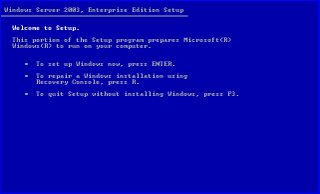
5. Review the License agreement in the next screen and if you agree on all the terms and conditions of this agreement, press F8
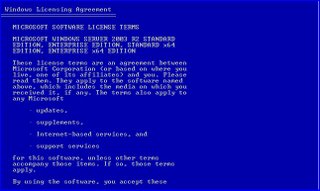
6. The next screen shows the existing disks and partitioned space on your server. Here I used a server with Mirrored 2 x 146 GB Disks, so the available unpartitioned space is 130 GB where I will create two partitions only, first partition which will have 20 GB space as C Partition and second partition which will have the remaining space as E Drive.To create the first partition from the above screen, Press C.
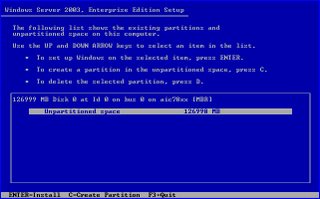
7. In the Size Partition specify the size of the new partition, here in our example I will create a partition of 20 GB or 20000 MB and will be used as C Drive, as appears on the next screen. Click Enter to create the new partition.
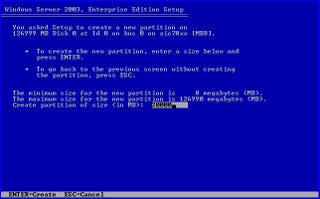
8. You will be returned to the previous screen to see the new created partition, and how much is remaining for un-partitioned space available for the new partitions.
9. Select the un-partitioned space available to create a new partition (E Drive) with the remaining space available.
10. Your Disks partitions will appear like this:
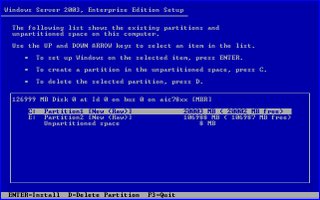
11. Choose C Drive to install Windows Server 2003 on, click Enter.
12. The next screen will give you options on how you want to format Operating System Partition (C Drive). Choose first option which will format C Drive as NTFS. Click on Enter when you finish the selection.
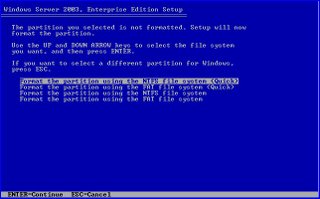
13. The Setup will start formatting the Partition based on your selection, which is Quick NTFS Format.
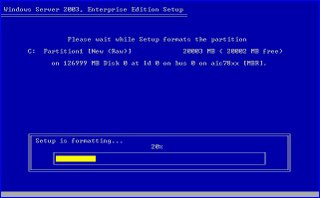
14. After formatting C Drive, Windows Setup will start copying the setup files to the Windows Installation Folder created locally on the formatted partition (C Drive).
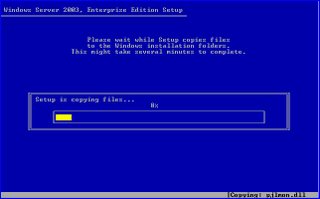
15. Now, after Setup Process copies the Windows Installation Files locally to the Windows Installation Folder, the server will restart to start the Windows Installation and Configuration Process. Please note that the Server will be restarted Two Times to finish the installation process, this is the first restart, and the second restart will occur after finalizing the configuration of Windows.
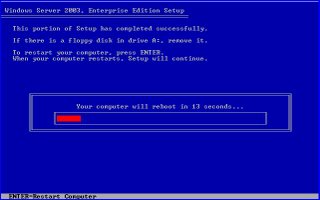
16. During restart of your server you will get the following Windows Server 2003 Startup Screen.
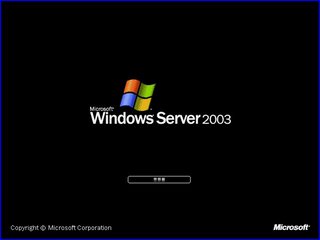
17. When the server finishes loading the Windows Setup Files, it will start the Windows Installation and Configuration Wizard.
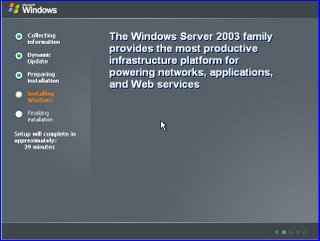
18. The First Screen after the Windows Installation Wizard is the Regional and Language Settings.
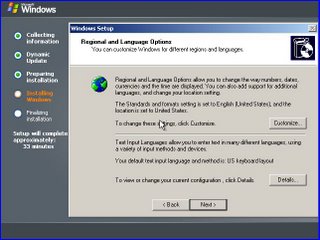
19. Since we are using an English Version of Windows, then the default language will be English, if you want to install additional support language during setup (like Arabic Language Support) click on “Customized”, then from the tabs choose “Language” tab. Under “supplemental language support” tab click on “Install Files for complex script and right-to-left Languages (Including Thai)”.
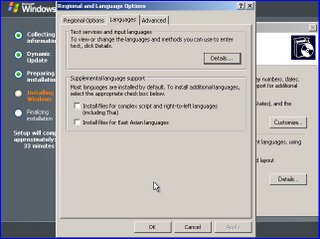
20. When you choose to install additional language, you will be prompted for a space confirmation message, click Ok on you have available space for this additional files (only 10 MB or more is required).
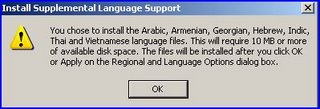
21. After you finish installing the additional language, click on Next from the Regional and Language settings screen.
22. The next screen will be the Personalize Screen, where you provide information about the Organization that this Windows Server will operate under its network. In this article, this server will operate under my personal organization which is “Al-Ankar Organization”. Click on Next when you finish feeding up the required information.
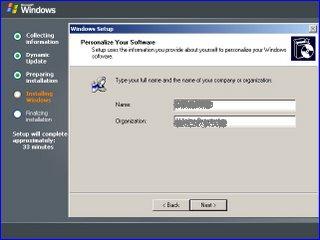
23. In the next screen you need to provide the Windows Server 2003 Product Key, this key can be found in the back of the Windows CD Cover or provided by separate Licensing Certificate by the Media and Licensing Provider. Click on Next when you finish from typing in the Product Key.
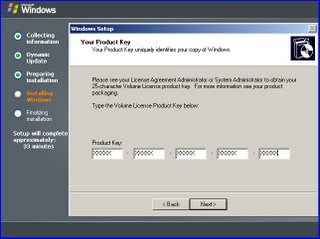
24.The Next Screen, In the Licensing Modes dialog box, selects the appropriate licensing mode for your organization, and then click Next. If you are not sure, just keep the default and click on Next.
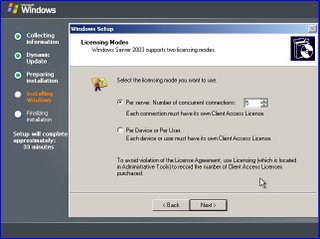
25. In the Computer Name and Administrator Password dialog box, type the new computer name in the computer name box, and choose a password for the “Administrator” Local Account, and then click Next.
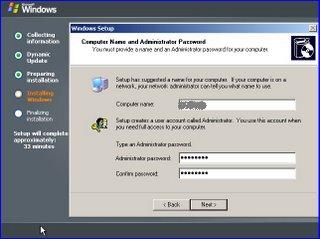
26. In the Date and Time Settings dialog box, correct the current date and time if necessary based on your country or region date and time, and then click Next.
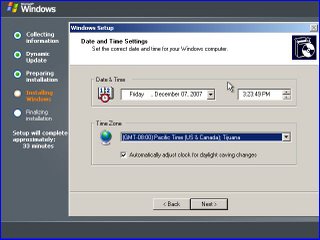
27. Now, Windows will start configuring the server based on the information you provided in the previous screens.
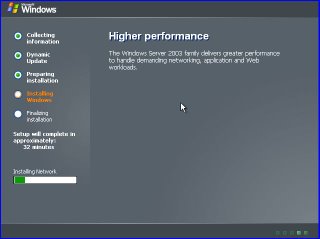
Now, the Windows Setup will start the networking components installation and configuration on the server. The first networking configuration screen will be the TCP/IP Configuration of the Server Network Card. If you know the IP Address that this server will host, then click on custom settings and type in the IP Configuration (IP Address, Subnet Mask, Gateway, Primary DNS, Secondary DNS, etc). if you don’t have such information, then keep the default selection which is “Typical Settings” and click on Next.
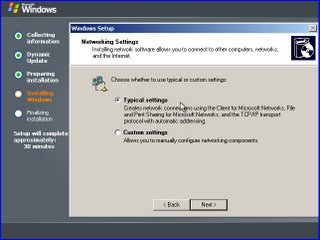
28. The Next Networking Configuration Screen will be “Workgroup or Computer Domain”. Now, if this server is the first Server under your network then you don’t have a domain to join this server to, so keep the default selection which is “Workgroup” and keep the name of this workgroup as the default suggested name which is “Workgroup” and click on next. If you already configured your TCP/IP Settings or you have already Domain under your Network and you have a DHCP Server that leases IP’s to your computers, and you want to join this new server under your existing domain, then you can specify your domain by clicking on “Yes, make this computer a member of the following Domain:” and then specify the domain that you want to join this new server to.
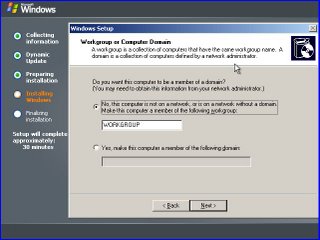
29. Now, Windows will configuration the Networking components based on your selection on the Networking Configuration screens shown above.
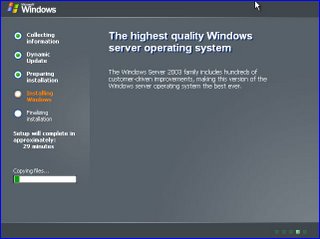
30. The Windows Setup will start completing configuration and installation of Windows on the Server, and when it will finish, it will restart automatically and takes you to the new installed Windows Server 2003 Logon Screen to start working and browsing the new Server features.
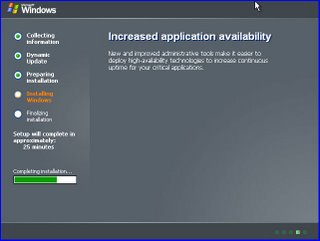
31. Finally, this the Logon Screen that you will get when you restart the server after it finishes the installation of your Windows Server 2003 Server.
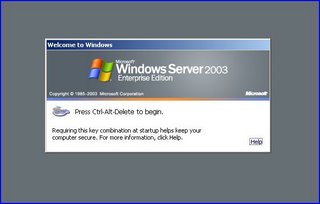
32. Then you can click on “Ctrl-Alt-Del” on your keyboard, and provide the logon credential specified during the setup, which are:
User: Administrator
Password: Pass@word1
33. Now, you need to connect this server to the internet and update it with the latest Security Patches and Service Packs.

